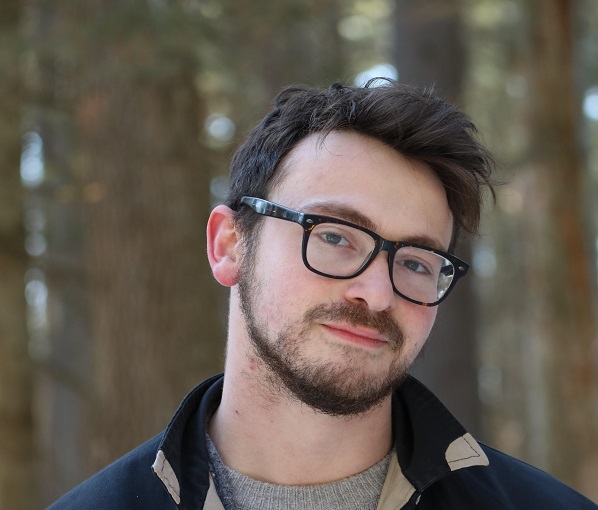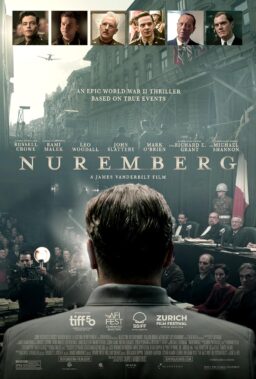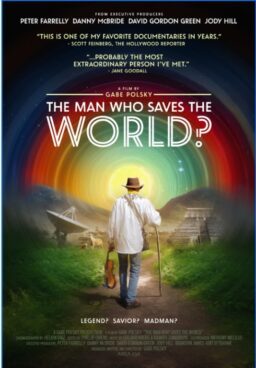Across a body of work both compassionate and uncompromising, the filmmaker Lodge Kerrigan has maintained a distinctive physical proximity to the emotionally isolated characters he depicts living in society’s margins.
“Clean, Shaven,” his 1993 debut, worked rigorously to approximate the inner reality of a paranoid schizophrenic, conveying his visual and auditory hallucinations in all their abrasive force and abstraction. 1998’s “Claire Dolan,” meanwhile, applied a chillier, more disassociated kind of gaze to its study of an upscale New York sex worker, observing appointments through the windows of looming glass high-rises as if peering inside a fishbowl.
But it was with 2004’s “Keane,” his third feature (and first co-produced by Steven Soderbergh), that Kerrigan secured his reputation as a singular, celebrated voice of the modern American independent cinema. Starring Damian Lewis, this masterfully harrowing psychodrama—which returns to theaters this month in a new 4K restoration—first finds its title character frantically pacing New York’s Port Authority, in search of the six-year-old daughter he tells passerby was abducted at the terminal months earlier.
Muttering to himself in a feverish effort to make sense of the disappearance, Keane retraces his steps, or at least seems to. Abruptly, he boards a bus, consulting the time as if piecing together another clue before he hurriedly gets off again. As the mainly handheld camera (by DP John Foster) remains uncomfortably close to Keane, hovering by his shoulder or whipping around to follow his darting line of sight, the character’s disorientation becomes ours. Through fleeting glimpses of Keane’s mercurial daily motions—binging on cocaine and alcohol, hooking up in bathroom stalls, sleeping in the grass by a highway—that sensation is heightened. In lieu of objective explanation of his circumstances, we start to recognize the expressions moving across his face, flickers of anguish, rage, and misery that precede a course of action.
Once Keane arrives at a transient motel, meeting another tenant (Amy Ryan) whose daughter (Abigail Breslin) resembles in age the one he’s lost, Kerrigan’s film expands from an unnerving character portrait into a more ambiguous, affecting drama, one that has lost none of its power to immerse and unsettle in the 18 years since it first hit theaters.
Last weekend, Kerrigan spoke with RogerEbert.com about remastering and restoring “Keane,” staying close to his characters, and embracing the contradictions of their humanity.

How did you first become involved with the restoration?
When the rights reverted—they had been with Magnolia, the original distributor—Steven [Soderbergh] gave me a call and asked me if I’d be interested in remastering it. We thought about how to approach getting the film seen again, and I reached out to Ryan Krivoshey at Grasshopper Film, who expressed interest; that’s when Grasshopper came on board.
I usually watch a film once, with an audience, then I move on. For me, the most interesting part of filmmaking is the actual making of it. Though I’m extremely appreciative and grateful to present work, and I enjoy experiencing it with an audience, that’s not something I do repeatedly. And so, I hadn’t seen “Keane” in quite some time. We shot on 35mm, and we’d made prints through a photochemical [process.] This was back in 2004 or 2005, so we also did the standard film-to-video transfer, so it could be released on DVD and wherever else required a digital-tape format. The color space, back then, was nowhere near as sophisticated as it is now, so I jumped at the chance [to restore it.]
In that process, I was really very fortunate. The new version is quite beautiful. It’s remarkable, the things that you can accomplish not only with color correction but also shaping light. It’s important to remember that we shot the vast majority of the film in live locations, with mixed lighting sources. It was really a challenge from a timing or color-correction point of view, right from the start. There were also a number of shots that, back in 2004 or 2005, we originally did visual effects for—not CGI, just to correct for shutter problems in the camera and light flicker from fluorescent lights. We did that in a photochemical process; they created a new internegative. What we did was go back, in this process, to the original camera negative. In the digital space, we were able to restore those shots and fix those technical problems. They look much better.
Given the aesthetic realism of “Keane,” what were your intentions when it came to restoring particular shots? How did you want this restoration to look?
When Keane takes Kira to the skating rink, for instance, there’s fluorescent lighting, so we were basically fighting the contrast between cyan and magenta. If you pull fluorescence, to pull cyan out of the skin tone, it’s going to veer towards magenta. [While restoring “Keane,”] we were able to find a much better balance, so the skin tones were more naturalistic. Within that, you have a choice as a director as to how much you want to beautify it or keep it well-balanced. At no point were we trying to make “Keane” look beautiful. That wasn’t the case … Beauty is such a political term already, and I really reject that. What we were trying to do is have it be more representative of the original intent, which opens an interesting question: When you’re remastering or restoring a film, 18 years down the road, how can you remember what the original intent was? That was part of the conversation. We tried as best we could to keep to the emotional and psychological intent of the film but, at the same time, find a better balance of color within it.
Did going back into the film lead you to reconsider or re-evaluate any elements of its narrative?
I was fortunate in restoring and remastering “Keane” to work with Kristina Boden, a remarkable editor who cut “Claire Dolan” and my episodes of “The Girlfriend Experience,” as well as some other TV work that I’ve done. She helped supervise the whole process, with me. We were discussing the potential of remastering “Claire Dolan” and asked ourselves, “Would we go in and try to re-edit it at any point? From a theoretical point of view, are there any elements that we think we should re-edit?” The same conversations extended to “Clean, Shaven” and “Keane.” I decided, at the end of the day, that it would have gone against the intent of the original film.
There were one or two small things that I considered [re-editing] with “Keane,” mostly in the [sound] mix, to rebalance some elements sonically. But the way we did it in the original film was the original intent. Now, I would perhaps do it differently, very slightly; we’re talking degrees. But my attitude is that I made that film then; it’s almost a document of that period, of that time. To change it, at any point later—to go back once it’s complete, once it’s screened, once we’ve signed off on it—you could theoretically do that, but it’s a gray area. In the more traditional art world, restoring paintings, experts come up with these questions all the time. How much do we clean an image? How much do we change it?

Throughout your body of work, you’ve pursued this visceral sense of proximity to your characters, but the characters you tend to focus on often conceal sides of themselves or convey a certain opacity. What draws you to that tension?
It’s twofold: I have a voyeuristic nature, which is what draws me to filmmaking to begin with. When I lived in New York, I’d take the subway, and I could literally stare at people 24 hours a day, just because I found their faces endlessly fascinating. Also, I’m fascinated by the way that people express themselves non-verbally. You have to decipher certain clues that they may or may not be giving you, and context that the environment may or may not be providing. It’s not a question that anyone can come to a definitive interpretation of. Rather, it’s trying to be attuned to the fact that people express themselves behaviorally. That, in essence, involves what you call a certain opacity. You can never be 100 percent sure; even when people express themselves through dialogue, you can’t be 100 percent sure. As a writer, I tend to shy away from exposition, and from explaining characters’ emotional or psychological states through dialogues. I avoid that as much as possible. I’m not particularly interested in having a character define themselves through dialogue. If you remove that, it asks the audience to come to their own conclusions.
There’s so much in “Keane,” as well, about the connection between mental illness and poverty, that psychologically destabilizing effect a state of constant transience and insecurity has on a person.
When people are mentally unstable or are facing challenges to their mental health, this often has severe economic consequences. A lot of people who suffer from serious mental illness at some point in their life end up homeless or transient. That’s just factual. I just tried to address and include that in the film.
One thing that is significantly important to me as a filmmaker is having real life in front of the camera: that you don’t know what’s going to happen, that it’s unpredictable, that it’s alive. It’s also important to write and present characters that are human—which by necessity entails that they are flawed—and not to shy away from their flaws. If they are human, they can do things that are self-destructive or destructive to other people, but they can also do things that are very kind at the same time. That contradiction is something I embrace and don’t reject. It feeds into showing a transient world that people usually want to reject or don’t want to see. So much of the role of filmmaking, literature and art is to present humanity in a more full way that sometimes people don’t want to see, to embrace that this is what it is. This is part of the human experience.
Damian Lewis gives such a compelling, forceful performance in “Keane.” He’s since found great success on television, winning an Emmy for “Homeland” and starring in “Billions.” What can you tell me about working with him on this film?
First off, he’s a remarkable human being. We’re close friends to this day. As a collaborator, he is almost ideal. His attitude as an actor is that, as an actor, he should be able to make anything believable. And so, he is willing to be challenged completely, as a performer. If you go to him and present a certain problem, some actors may recoil from that, but Damian embraces it. That’s all you can ask for. He’s so committed as a performer. He’s also incredibly intelligent.
So much of filmmaking is problem-solving. When you make a film, what you’re doing is solving problems in the process of articulating the vision that you have. The more intelligent your collaborators are in terms of solving problems, the more clear the articulation of your vision will be. I knew, on “Keane,” that it would be a very challenging role. Heidi Levitt, the casting director, sent me “Band of Brothers” to watch. I was struck by Damian’s performance as Captain Winters. His character was diametrically opposed to Keane, but I saw that Damian was magnetic. The choices he was making as an actor were intelligent, and his reactions kept evolving in very interesting ways. I started to think of him in the role of Keane, and then I flew to London to meet him. I knew it would be a very intense project and process to [go through] together, but we got along very well while discussing the character.
I rehearsed on location to show him the actual locations. As opposed to trying to stage scenes, I just had us read through the script, along with Amy Ryan and Abigail Breslin. I brought the DP, John Foster, to the rehearsals on location so we could solve the technical problems of shooting. Our coverage was only one shot per scene, in the entire film, so the only edits apart from in-camera editing are jump cuts. Technically, that presented certain problems. For instance, if you’re shooting in a motel room at night and you’re going to stage a scene and shoot it 360, the windows ultimately become mirrors. Because John came out early, we were able to discuss and start to solve those reflection issues very early.
I would improvise certain scenes to allow the actors to really own their characters. Everything was scripted but, if they wanted minor changes in the dialogue, that was fine by me. By the time we got to set and started shooting, knowing that we were going to be in live environments, there was an unspoken connection, as it were, between Damian and myself, the other actors, and John. I saw early on that Damian was in the zone, as were Amy and Abigail, so I tried to guide the performances and stay out of the way. The crew and I just tried to capture it, to answer questions and guide them to where they needed to go. A large part of the communication at that point was non-verbal. We just felt it.
Remastering and restoring the film this time around, I was especially struck by Damian’s performance. He’s just electrifying. He holds the screen at every moment. He’s alive, and you never know what his character is going to do. Abigail was incredible, as well, and so present in her performance. Amy Ryan gave a beautiful, nuanced performance. I was also struck by how high-risk the shoot was. [laughs] And the other thing that really struck me was just how relevant the film still seems. I hadn’t watched it in so many years and, watching it during the restoration, it just seemed like it could take place today.

You’ve worked extensively in television this past decade, most notably on “The Girlfriend Experience.” Has revisiting “Keane” led you to reflect at all on your experiences since and on where you currently find yourself as a filmmaker?
The last film I made was “Rebecca H. (Return to the Dogs),” which I shot in Paris in 2010, so it’s been a while. After that, I switched to television, and I’ve been working almost exclusively there since. I really enjoy television; it’s very fluid, the distinctions between the two. There is a difference, but it largely depends how much control you have.
If you have creative freedom over a television show, as Amy Seimetz and I had over “The Girlfriend Experience”—because of Steven Soderbergh’s involvement and the support of then-Starz CEO Chris Albrecht—the distinction becomes minor. If you don’t have that freedom, either economically or artistically, the biggest distinction between the two becomes pacing. It’s about the amount of information you’re required to get across in television, versus a film. That’s maybe the only significant difference between the two. From a directing perspective, and primarily from a writing perspective, television can be more challenging than feature films. In the instance of “The Girlfriend Experience” season 1, there are 13 half-hour episodes. You have to make each episode work dramatically in 30 minutes and, at the same time, make all 13 episodes work dramatically for the season. You’re operating on multiple levels that don’t exist in feature filmmaking, where you’re writing a 90-minute or 120-minute arc.
There have been great filmmakers who make great television and go back and forth. Personally, I’ve become a much better filmmaker as a result of working in television. From a practical point of view, if I write and direct five hours of television in a year, I have so much more experience than if I’m making a feature film every two years. To be good at what you do requires constant practice. If you’re not getting out there on the floor and directing on a consistent basis, it’s going to be challenging to develop as quickly. That goes for all fields; if you look at professional sports, athletes are training all the time.
I liken it to the studio system, before it fell apart in the late ’50s, back when directors were under contract for a specific studio and they didn’t necessarily choose their projects but were instead handed projects to direct. A lot of times, television directing for hire is like that; you get a script, you have no idea what it’s going to be, and you open it up and go, “How am I going to direct that?” It’s very challenging, but it also pushes you out of your comfort zone. It pushes you to grow. I’ve had such fantastic experiences in television over the years; it’s given me more range and made me much more efficient as a director. I can work faster and be more articulate about what I’m trying to accomplish. It’s not without its downsides or challenges. Those depend on the project, what the economic goal of the project is, how much the director is respected and made part of the creative process. If you’re part of what Steven calls the “brain trust,” having creative input from a very early stage, that’s more rewarding and ultimately makes for a better show.
A new 4K restoration of “Keane” opens in New York August 19 and in Los Angeles on August 29.












